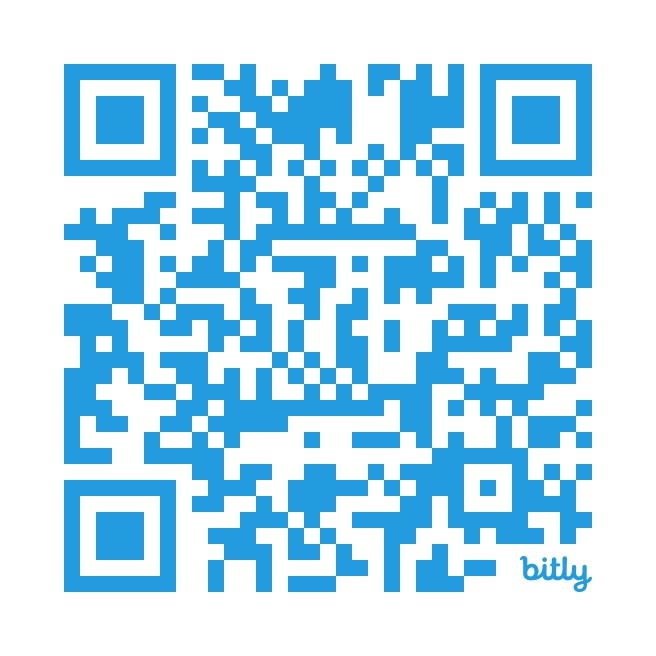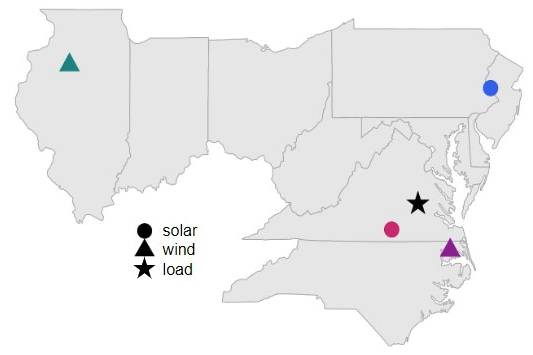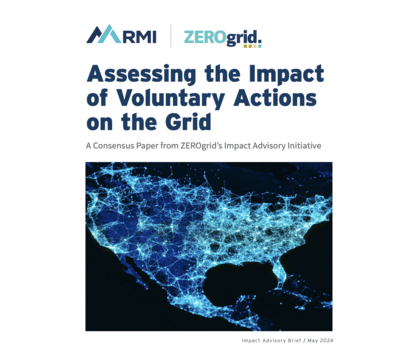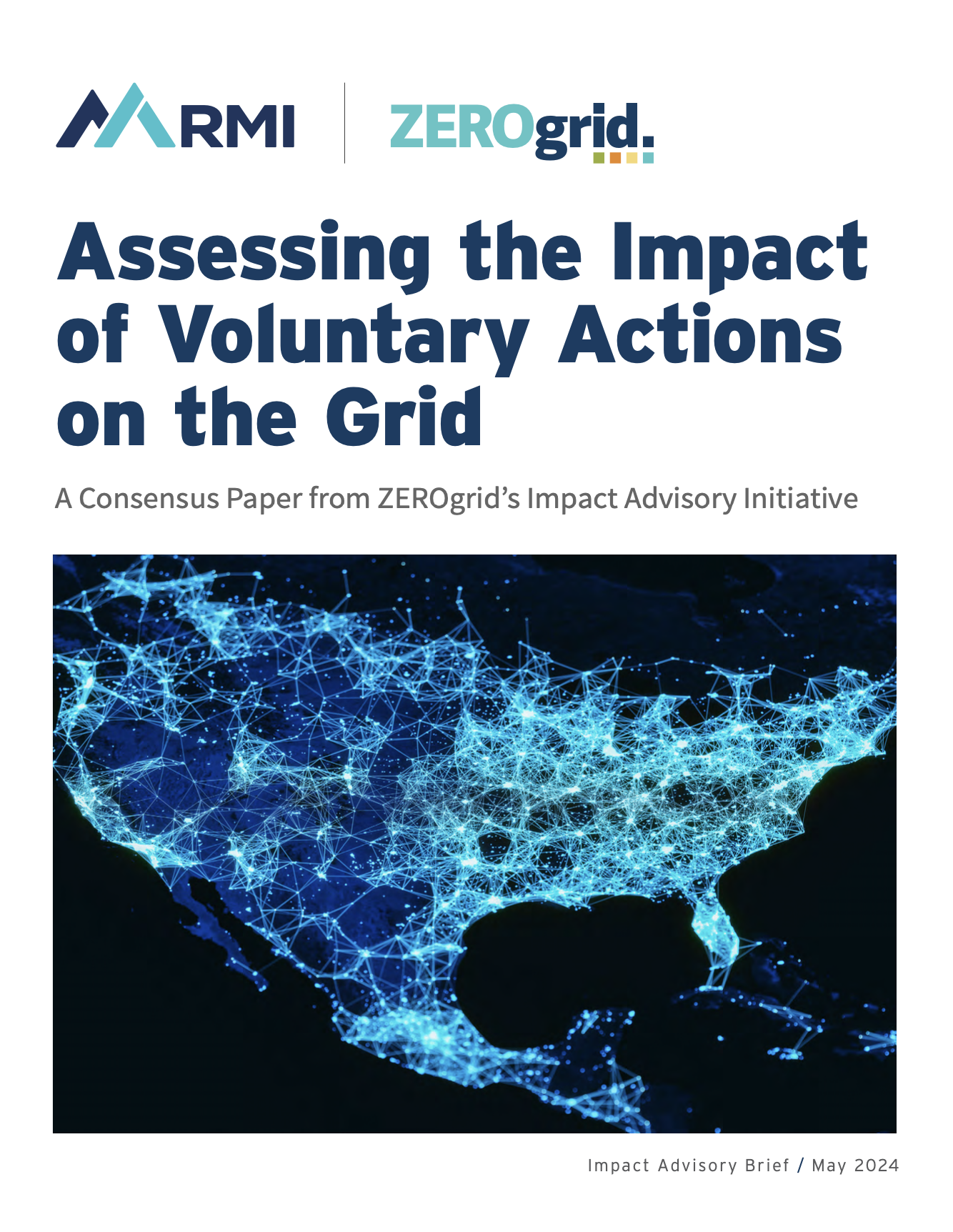
The new working group is developing standardized, objective approaches to verify the accuracy of marginal electricity emissions data and will make all outputs freely available to the public to jumpstart more effective climate action.
Oakland, Calif. – 27 March 2025 – VERACI-T (Validating Emissions Rates for Accurate Consequential Impact Taskforce), a new working group dedicated to advancing rigorous validation of the accuracy of marginal electricity emissions data, has announced its formal launch, along with the submission of three papers under academic peer review that develop and apply different techniques to evaluate the accuracy of different marginal emissions datasets.
Marginal emissions data are used today in nearly every analysis of the consequential impact of electricity interventions. Corporate practitioners, policymakers, and others evaluating the potential use of different marginal electricity emissions datasets need scientifically accurate, fact-based ways to evaluate the correctness of such data, preferably in a standardized fashion. But today, there is no such standardized approach, and many practitioners in the corporate electricity community are unaware that reliable methods to evaluate such data already exist. VERACI-T is addressing this blind spot to support institutions of all kinds in having ready access to methods that help determine whether and when marginal emissions data are accurate.
The working group is organized as a forum that invites different academics and grid operators to share expertise with one another and with interested corporations. Techniques to analyze counterfactuals to evaluate the accuracy of marginal data are commonplace in many fields, from medical trials to public policy to epidemiology and quantitative finance. The VERACI-T working group operates by finding validation methods that have been widely used and proven to be accurate in other settings, and by developing proposed ways to apply them to marginal electricity emissions data. Members and guest experts then explore and refine such methods before submitting them to peer-reviewed journals for additional third-party verification. All results are freely available for anyone to use to explore the accuracy of any marginal electricity emissions dataset.
“Randomized controlled trials and natural experiments are used by thousands of experts daily in evaluating the accuracy of marginal/causal signals in everything from vaccines to quantitative finance. But all too often in electricity, people assume that regular math doesn’t apply and causal data can’t be validated,” said Gavin McCormick, founder and executive director of WattTime. “The idea of VERACI-T is to help connect anyone still making these assumptions with the same careful, rigorous, peer-reviewed experiments to evaluate accuracy that are used in so many other fields.”
VERACI-T fills an important gap in the growing marginal emissions data space. It complements several other initiatives, such as the ZEROgrid Initiative, an RMI-coordinated coalition that asks academics to weigh in on the carbon accounting and strategic implications of different datasets. The Emissions First Partnership — a group of leading electricity users who have proposed to move beyond megawatt-hour matching to focus on the quantified emissions impact of electricity consumption and generation — is also keenly interested in the question of how to determine when a dataset does or does not accurately quantify such impacts.
VERACI-T is structured as a taskforce in which each member contributes meaningfully to the work. Founding members include Amazon, Apple, Meta, Microsoft, REsurety, and WattTime. So far, environmental tech nonprofit WattTime, energy analytics company REsurety, and two pending future members have gathered and crunched data. Every member, guest academics, and grid operators involved have assisted in reviewing methods to help ensure they are strictly objective. Amazon, Meta, and Microsoft are the initial funders of the working group, and sometimes bring the group particular questions about accuracy for which they are seeking answers.
VERACI-T’s work is conducted one paper at a time, each of which applies a new method to validate the relative accuracy of different types of marginal emissions models. Each paper is then submitted for peer review in traditional journals. The taskforce’s first paper examines claims that different operating marginal emissions models make that are directly observable. The second and third papers examine natural experimental “shocks” in which electricity demand changed unexpectedly to determine whether different marginal emissions models could accurately quantify the change in emissions due to the shock. Future papers will use similar empirical methods to validate the accuracy of long-run emissions models, conduct randomized controlled trials, and compare outputs with non-public grid operator data.
All VERACI-T findings — including validation methodologies, assessment of specific marginal emissions datasets, and other insights and resources — are freely available to the public at https://veraci-t.org/.
VERACI-T’s founding members encourage interested parties to reach out to discuss contributing to the group’s work. This includes academic and other experts in marginal emissions data; groups with access to rare or non-public data that can be used to validate marginal emissions data, like grid operators and utilities; potential funders; and anyone else who would like to learn more.
For more information, please contact VERACI-T’s program coordinator, Chiel Borenstein, by emailing [email protected].
About VERACI-T
VERACI-T (Validating Emissions Rates for Accurate Consequential Impact Taskforce) is a working group of organizations that are developing a framework for validating marginal emissions datasets; investigating how well specific such datasets reflect real-world consequential impact; and assessing and comparing the accuracy of different marginal emissions datasets. Outputs are freely available to the public in an effort to jumpstart more effective climate action. VERACI-T’s current members include: Amazon, Apple, Meta, Microsoft, REsurety, and WattTime. Each meeting, the group invites one new company, academic, or grid operator to join.
Media Contacts
Nikki Arnone
Inflection Point Agency for VERACI-T
[email protected]










